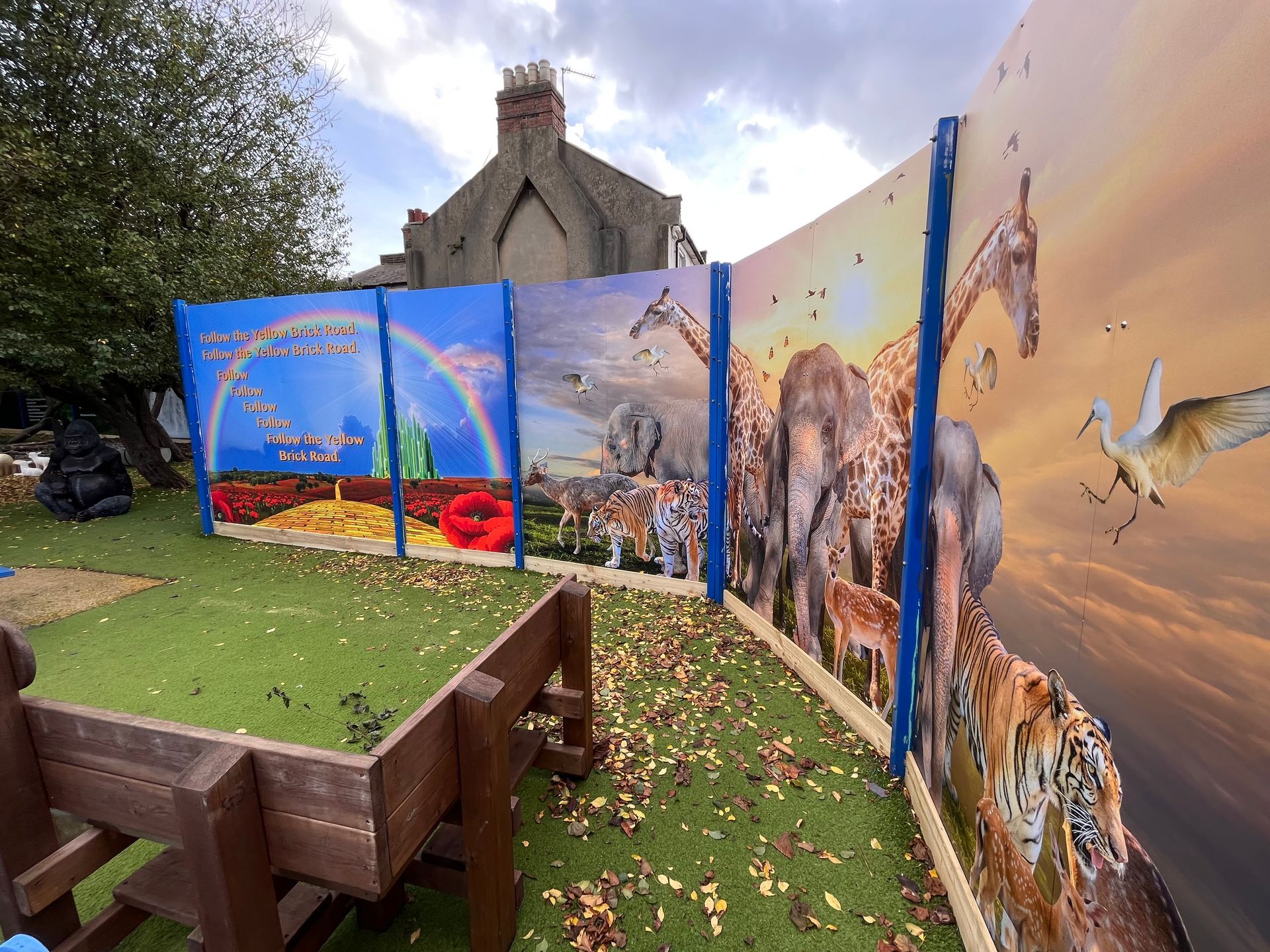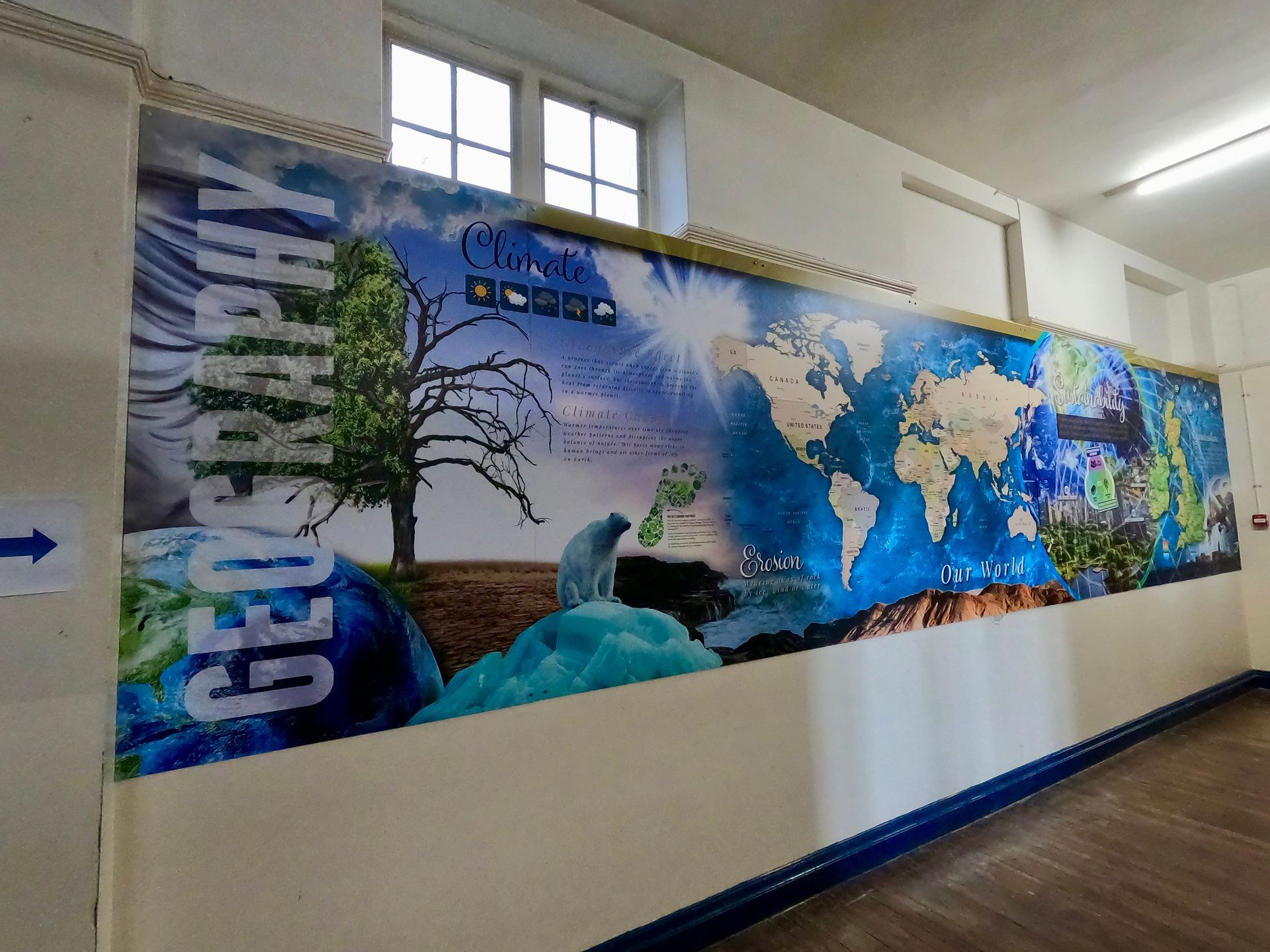Impact on pupils 16
Using wall graphics that highlight essential aspects such as the environment renovation alongside sustainability efforts in a visually engaging manner can create a sense of consciousness among students wildlife preserve. Not only will this make the surroundings more attractive, but it will also foster an early understanding and respect for nature that complements your eco-conscious endeavours.

We are raising awareness for the environment through wall art displays
Using wall art that teaches about the environment and wildlife can be visually engaging and informative for students at an age to develop a love for nature and its conservation efforts effectively. This approach seamlessly fits with eco programs. Encourages a sense of duty towards environmental stewardship.
Below are some tips on creating and installing wall graphics that effectively raise awareness about ecology;
Elements are crucial for promoting consciousness.
- The interconnectedness of wildlife and ecosystems is crucial for maintaining a healthy environment.
- Let's create graphics that illustrate a range of wildlife and ecosystems, such as forests and oceans, to emphasise the different species found in each habitat.
- Let's share information about animals and how they contribute to the ecosystem to educate students on the importance of wildlife conservation.
Explain the water and nutrient cycles by detailing each stage in the process.
Ways to support the environment include recycling materials and using energy sources in life.
Practical suggestions for reducing waste production and conserving energy while safeguarding wildlife can be integrated into student life routines.
Motivate students with messages to encourage them to get involved in safeguarding the environment.

Optimal Positioning for Results
- In settings, classrooms play a role in facilitating learning and knowledge sharing among students and teachers alike.
- We are designating sections of science classrooms as "ecosystem walls ", showcasing illustrations and educational content detailing the plant and animal species inhabiting various ecosystems.
- Display process diagrams using walls to illustrate processes such as the water cycle and photosynthesis.
- Create themed hallways that reflect the environment, like rainforest paths or ocean routes, to turn moving between classes into a learning adventure about nature.
- Interactive Displays can feature elements such as panels or QR codes that provide access to videos and supplementary details on environmental subjects.
- Let's establish "Conservation Corners” in shared spaces, with conservation tips to reduce waste and safeguard the environment.
- Please encourage students to explore the wildlife and plants in their area by setting up designated nature nooks.
Outdoor areas are essential as well:
- Graphics showcasing gardening and plant life could be displayed on walls and fences to highlight the significance of spaces and gardens.
- Promote eco-friendly habits by showcasing actions such as composting and collecting rainwater using vibrant visuals.
We are developing a plan of action.
"Working Together in the Design Process;"
- Collaborate with experts and conservationists to guarantee the accuracy and relevance of the visuals.
- Engage students by encouraging their participation in the design process, inviting them to share their ideas and contribute to creating the visuals.
Selecting Materials;
- Opt for materials like recycled paper and biodegradable adhesives when selecting supplies.
- Prioritise durability and safety using sturdy materials and child-friendly materials without any toxins.
- Opt for installation services to guarantee a precise application of graphics while preventing any alignment or damage concerns.
- Make sure to place pictures at heights where kids can see and reach them easily.
- Ensure the graphics stay vibrant and captivating by setting up upkeep and cleaning sessions.
- Let's schedule updates to cover environmental issues and maintain engaging up-to-date content.
Illustrations showcasing Environmental Consciousness on Walls.
A mural depicting wildlife;
- A lively mural depicting ecosystems, such as rainforests and oceans, is adorned with illustrations of the flora and fauna in these environments.
- Educating students about biodiversity and the significance of conserving habitats has an impact.
- A comprehensive water cycle illustration depicts evaporation, condensation, rainfall and accumulation stages.
- This will help students comprehend the unceasing flow of water across the Earth's surface and beneath it.
- Illustrations that showcase actions like recycling materials, utilising energy sources, conserving water resources and composting organic waste.
- We encourage students to incorporate eco habits by offering advice and tips on making an environmental impact.
- Boards are set up with messages promoting the protection of wildlife, the importance of reducing waste, and the saving of energy; they also feature components such as panels containing eco-friendly tips.
- Motivates students to make a difference in their routines to safeguard the environment.
Wrapping Up Ideas
Schools can enhance their appeal and educational value by using graphics that teach students about nature and sustainability in a captivating way. These visuals make the school look more attractive and raise awareness and a sense of responsibility towards the environment among students. Such an approach aligns with the school's efforts to promote eco-friendliness and nurture a generation of aware individuals.










